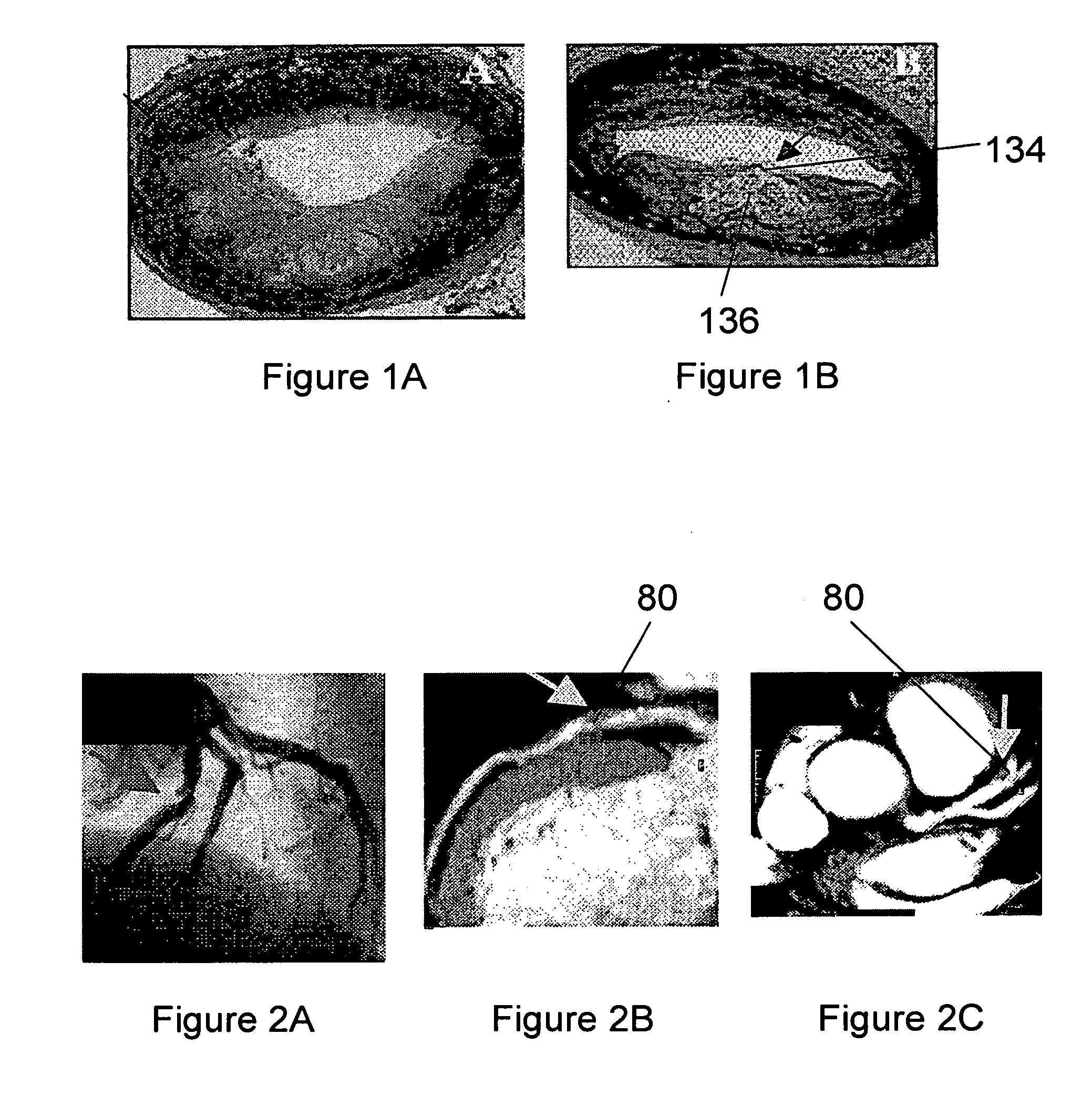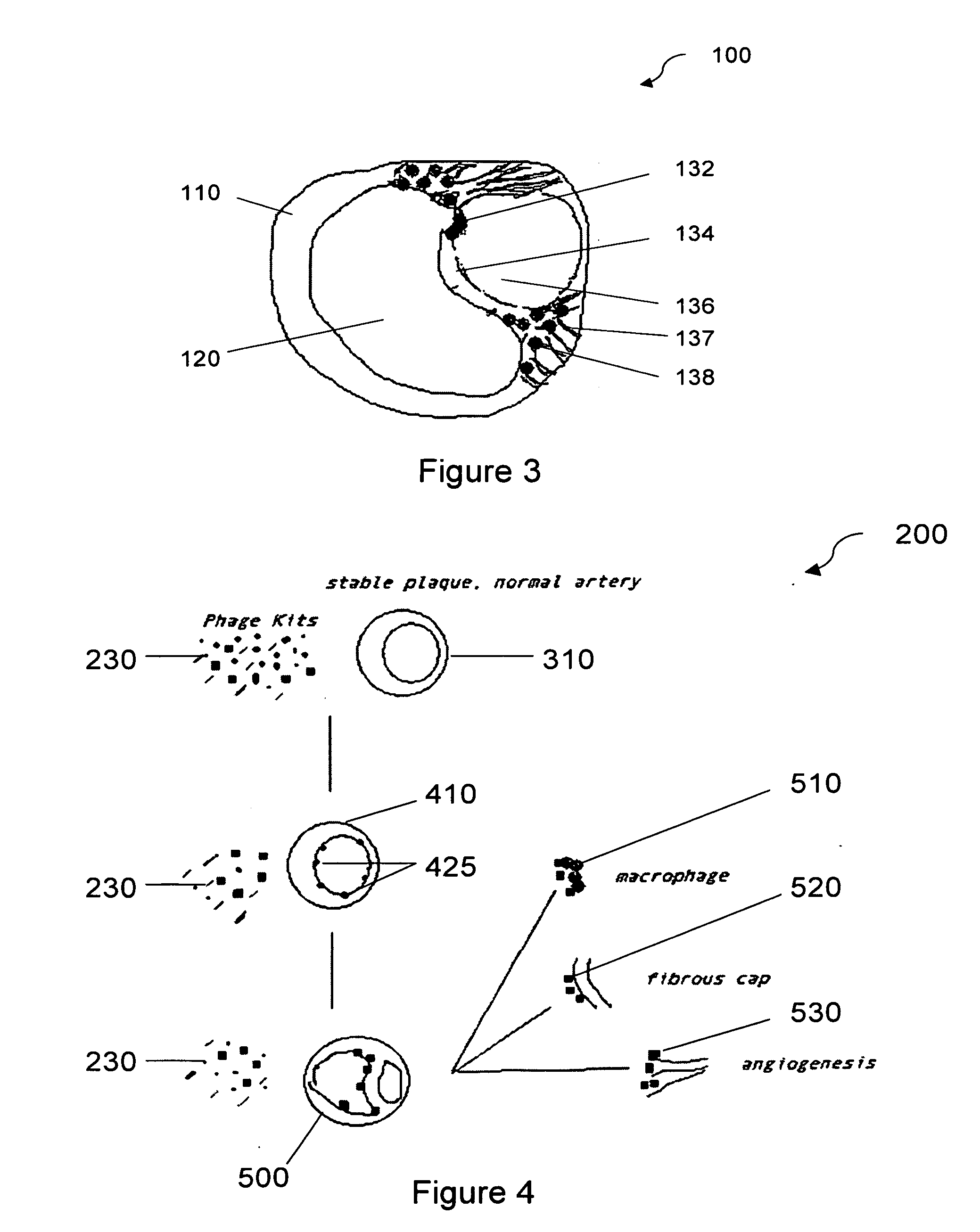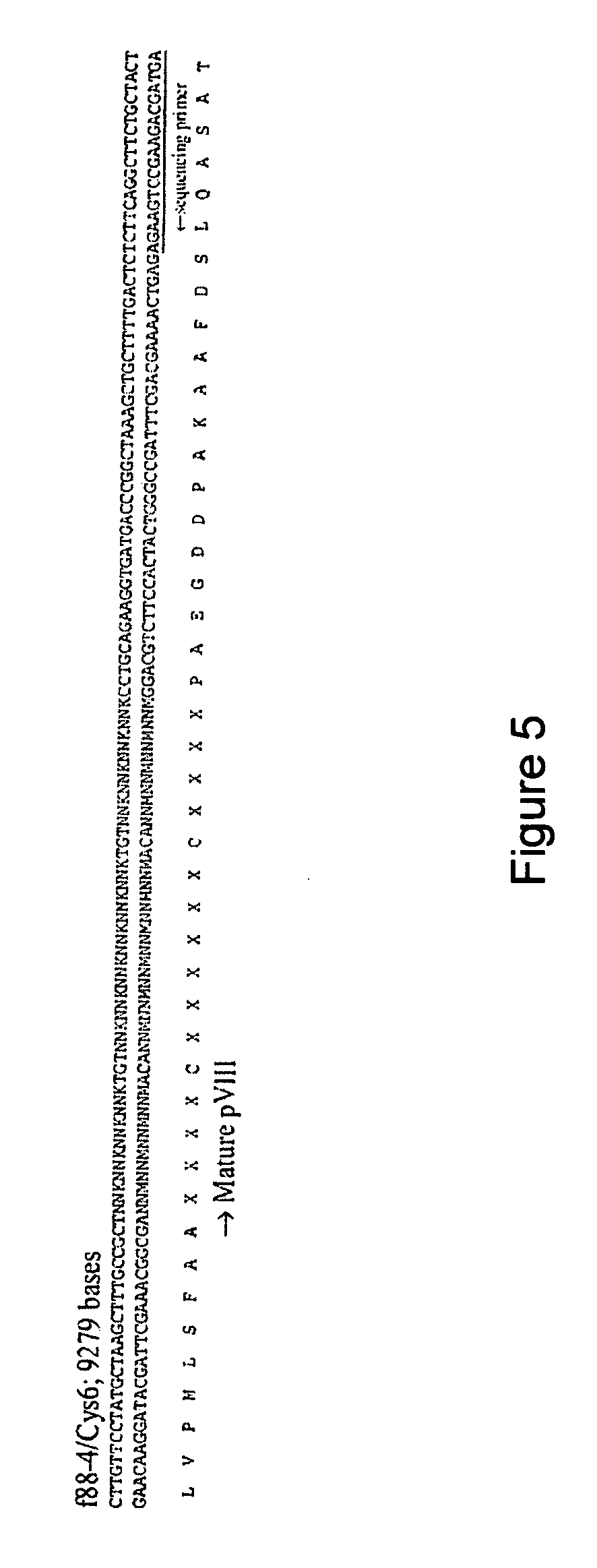Biomarkers of vulnerable atherosclerotic plaques and methods of use
a technology of biomarkers and atherosclerosis, applied in the direction of drug compositions, peptides, cardiovascular disorders, etc., can solve the problems of 500,000 deaths, inability to selectively identify vulnerable plaques, and injury to normal tissue such as vascular epithelium
- Summary
- Abstract
- Description
- Claims
- Application Information
AI Technical Summary
Benefits of technology
Problems solved by technology
Method used
Image
Examples
example 1
[0050] A study was carried out to identify novel peptides that bind in vitro to a known component of vulnerable plaques, myeloperoxidase. Myeloperoxidase, an abundant leukocyte protein that generates reactive oxidant species, is present and catalytically active within atherosclerotic lesions. A higher concentration of the enzyme myeloperoxidase is a feature that distinguishes vulnerable from stable plaques.
[0051] A phage display library of 16 mer cysteine constrained peptides in the display domain of the PVIII coat protein was used to select for peptides with increased affinity for myeloperoxidase and therefore with potential after radiolabeling for diagnostic imaging of unstable plaque. In general, the 16 mer peptides produced have the sequence
[0052] Briefly, the f88-4 / cys6 phage library was used for the selection following immobilization of myeloperoxidase on 6-well polystyrene plates. Myeloperoxidase was diluted in 0.1M NaHCO2, pH 8.5 to provide 1-10 μg protein in 400 μl per w...
example 2
[0063] Binding partners are selected by differential screening against stable and vulnerable plaques. Screening is performed both for clones identified in in vitro screening against purified plaque components as described in Example 1 as well as screening of the entire library. A phage display library is applied to surgically removed coronary arteries with stable plaques to exclude phage populations which interact with the stable plaques and normal arterial lumen. The remaining unbound phage population is then incubated with the arteries containing vulnerable plaques. The arteries containing vulnerable plaques are washed multiple times under stringent conditions to remove the unbound phage population. The bound phages are collected and propagated by infecting non-pathogenic laboratory bacterial strains. This screening process is repeated a minimum of three times to enrich the interacting phage population. The DNA of the resulting phage populations is individually purified and sequen...
example 3
[0064] The binding of identified peptides to components of plaques was confirmed histologically as follows. Peptide sequences found in multiple selected clones were used to produce peptides using synthetic techniques. Peptides may also be produced using recombinant DNA techniques. The peptides are conjugated with a detectable label, such as biotin using known protocols. The biotin-labeled peptides are used to confirm the binding specificity determined in Example 1 and Example 2 by immunohistochemical analyses of tissue such as vulnerable plaques or tissues rich in components vulnerable plaques that have been exposed to biotin-labeled peptides.
[0065]FIGS. 9A-9D show the results of such histological studies. Slides of bone marrow tissue were used since they are known to contain myeloperoxidase (above right). Treatments were as follows: FIG. 9A, anti-myeloperoxidase antibody followed with biotinylated secondary antibody; FIG. 9B, biotinylated twenty-three mer MPO-17 peptide; FIG. 9C, ...
PUM
| Property | Measurement | Unit |
|---|---|---|
| diameter | aaaaa | aaaaa |
| diameter | aaaaa | aaaaa |
| pH | aaaaa | aaaaa |
Abstract
Description
Claims
Application Information
 Login to View More
Login to View More - R&D Engineer
- R&D Manager
- IP Professional
- Industry Leading Data Capabilities
- Powerful AI technology
- Patent DNA Extraction
Browse by: Latest US Patents, China's latest patents, Technical Efficacy Thesaurus, Application Domain, Technology Topic, Popular Technical Reports.
© 2024 PatSnap. All rights reserved.Legal|Privacy policy|Modern Slavery Act Transparency Statement|Sitemap|About US| Contact US: help@patsnap.com










